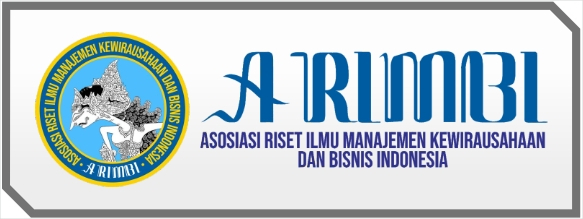EXCHANGE RATE STABILITY IN ASEAN COUNTRIES DURING THE COVID-19 PANDEMIC
DOI:
https://doi.org/10.55606/ijemr.v1i3.42Keywords:
Exchange Rate Stability, ASEAN Countries, Covid-19 PandemicAbstract
This study aims to analyze the effect of macroeconomic variables on exchange rate stability in five developing countries in Southeast Asia that are members of the Association of Southeast Nations (ASEAN) geopolitical and economic organization to see the short-term and long-term relationships during the COVID-19 pandemic. The data used is secondary data, from International Financial Statistics (IFS) for the period January 2020 to June 2022 using the Vector Error Correction Model (VECM). The results show that in the long run the variables that have a positive influence on exchange rate stability are lending rates, exports and the money supply. While the variables that have a negative influence are deposit rates, imports and the current account. In the short term, variables that have a positive influence on exchange rate stability are deposit rates, imports and the current account. However, the variable lending rates, exports and the money supply have a negative effect
References
Basyariah, Nuhbatul & Hafsah Khairunnisa. 2016. Analisis Stabilitas Nilai Tukar Mata Uang Asean-10 Terhadap Dolar AS dan Dinar Emas. Jurnal Ekonomi Syariah, 4(2), 227-253. https://journal.stainkudus.ac.id/index.php/equilibrium.
Chant, John., Alexandra Lai, Mark Illing & Fred Daniel. 2003. Essays on Financial Stability. Bank of Canada.
Counder. 2020. Impact of Covid-19 on Exchange Rate.
Dreger, Christian. 2022. Economic Impact of The Corona Pandemic: Costs and The Recovery After The Crisis. Asia and The Global Economy, 2(1) https://doi.org/10.1016/jaglobe.2022.100030
Forex Sentiment Indicator. 2020. https://fxssi.com
Gervais, O., Schembri L., Suchanek L. 2016. Current Account Dynamics, Real Exchange Rate Adjustment, And The Exchange Rate Regime In Emerging Market Economies. Journal Development Economics, 119, 86-99. https://www.sciencedirect.com/science/article/abs/pii/S0304387815001145
Gong Research Group. 2020. Covid-19 and Exchange Rates. https://gonglab.prat.duke.edu/pubications-year
Gopinath, G. 2020. The Great Lockdown: Worst Economic Downturn Since The Great Depression. IMF Blog.
Guzman, Martin., Jose Antonio Ocampo & Joseph E. Stigltiz. 2018. Real Exchange Rate Policies for Economic Development. World Development, 110, 51-62. https://doi.org/10.1016/j.worlddev.2018.05.017
International Monetary Fund. 2020. The Great Lockdown. World Economic Outlook 1, 1-37. https://www.imf.org/en/Publications/WEO/Issues/2020/04/14
Malahayati, Marissa., Toshihiko Masui & Lukytawati Anggraeni. 2021. An Assessment of The Short-Term Impact of Covid-19 on Economics and The Environment: A Case Study of Indonesia. Journal Economia, 22(3), 291-313. https://doi.org/10.1016/j.econ.2021.12.003
Mankiw, N. Gregory. 2006. Pengantar Teori Ekonomi Makro, Edisi Ketiga. Jakarta: Salemba Empat.
Martin, F. E. 2016. Exchange Rate Regimes and Current Account Adjustments: an Empirical Investigation. Jornal of International Money and Finance, 65, 69-93. https:doi.org/10.1016/j.jimonfin.2016.03.006
Minford, Patrick., Zhirong Ou, Michael Wickens & Zheyi Zhu. 2022. The Eurozone: What is to be done to Maintain Macro and Financial Stability?. Journal of Financial Stability. https://doi.org/10.1016/j.jfs.2022.101064
Mukhlis, Imam. 2011. Analisis Volatilitas Nilai Tukar Mata Uang Rupiah Terhadap Dolar. Journal of Indonesian Applied Economics, 5(2), Universitas Brawijaya. https://jiae.ub.ac.id/index.php/jiae/article/view/98
Ocampo, J. A., Rada, C., & Taylor, L. 2009. Growth and Policy in Developing Countries: A Structuralist Approach. Columbia University Press.
Rodrik, D. 2013. The Past, Present and Future of Economic Growth Working Paper 1. Geneva: Global Citizen Foundation.
Sarno, Lucio. & Taylor, M.P. 2002. Purchasing Power Parity and The Real Exchange Rate. IMF Staff Paper, 49, 65-105. https://www.imf.org/External/Pubs/FT/staffp/2002/01/pdf/sarno.pdf
Selmi, Refk & Jamal Bouoiyour. 2020. Global Market’s Diagnosis on Coronavirus: A Tug of War Between Hope and Fear. https://hal.archives-ouvertes.fr/hal-02514428
Stiglitz, J.E., & Greenwald, B. C. 2014. Creating a Leaming Society: A New Approach to Growth, Development, and Social Progress. New York: Columbia University Press.
Syarifuddin, Ferry. 2016. Konsep, Dinamika dan Respon Kebijakan Nilai Tukar di Indonesia. Bank Indonesia Institute.
Taylor, Alan M. 2000. A Century of Purchasing-Power Parity. National Bureau of Economic Research. http://www.nber.org/papers/w8012
Taylor, J. B. 2001. The Role Of The Exchange Rate In Monetary-Policy Rules. American Economic Review, 91(2). Article 263267.
U.S. Bureau of Labor Statistics. 2022. https://bls.govVieira,
World Health Orgnaization. 2022. https://www.who.int
Zhang, Yingfei & Zheng Feei Ma. 2020. Impact of the Covid-19 Pandemic on Mental Health and Quality of Life Among Local Residents in Liaoning Province, China: A Cross-Sectional Study. Journal of Environmental Research and Public Health, 17. https://doi.org/10.3390/ijerph17072381
Downloads
Published
How to Cite
Issue
Section
License
Copyright (c) 2022 International Journal of Economics and Management Research

This work is licensed under a Creative Commons Attribution-ShareAlike 4.0 International License.















